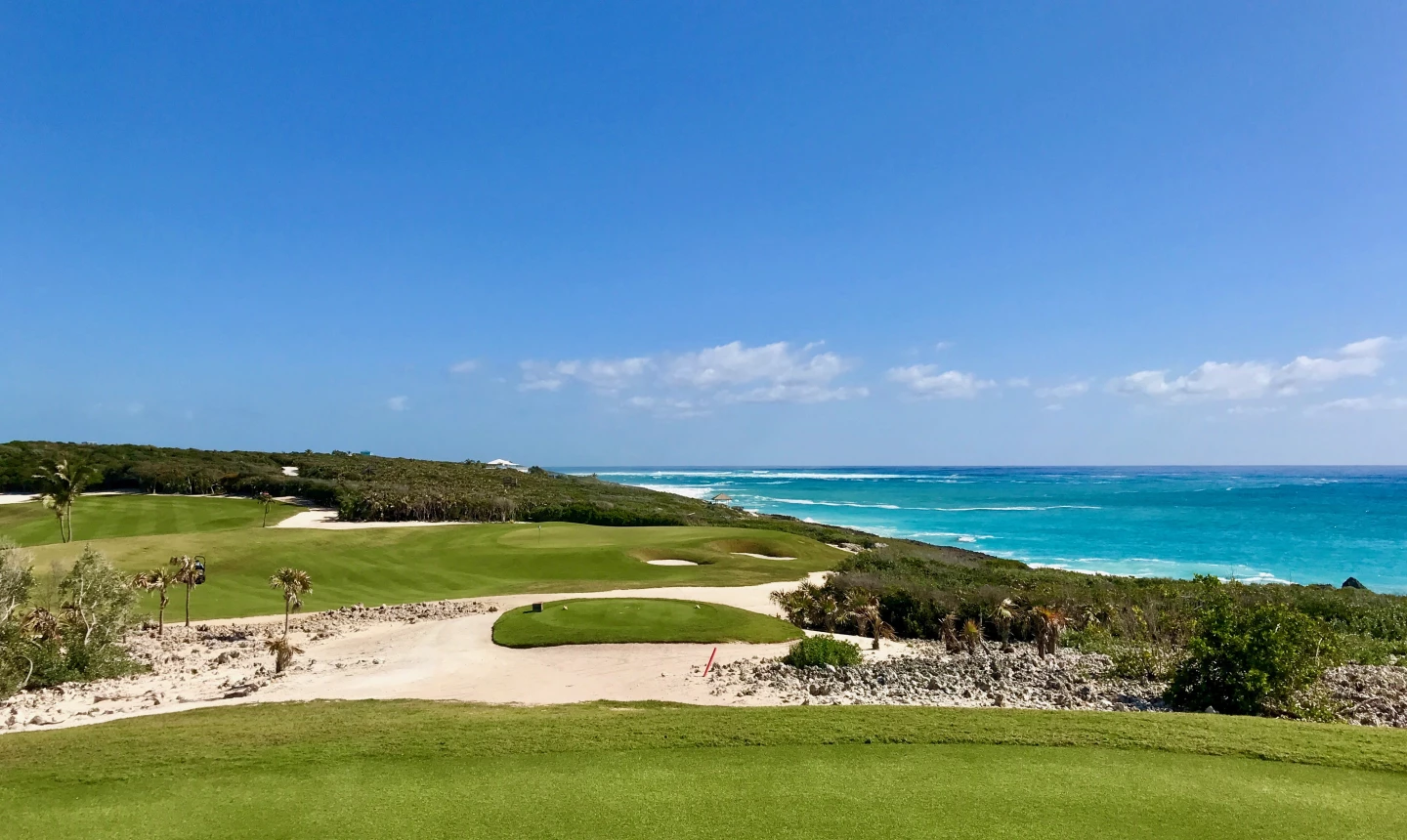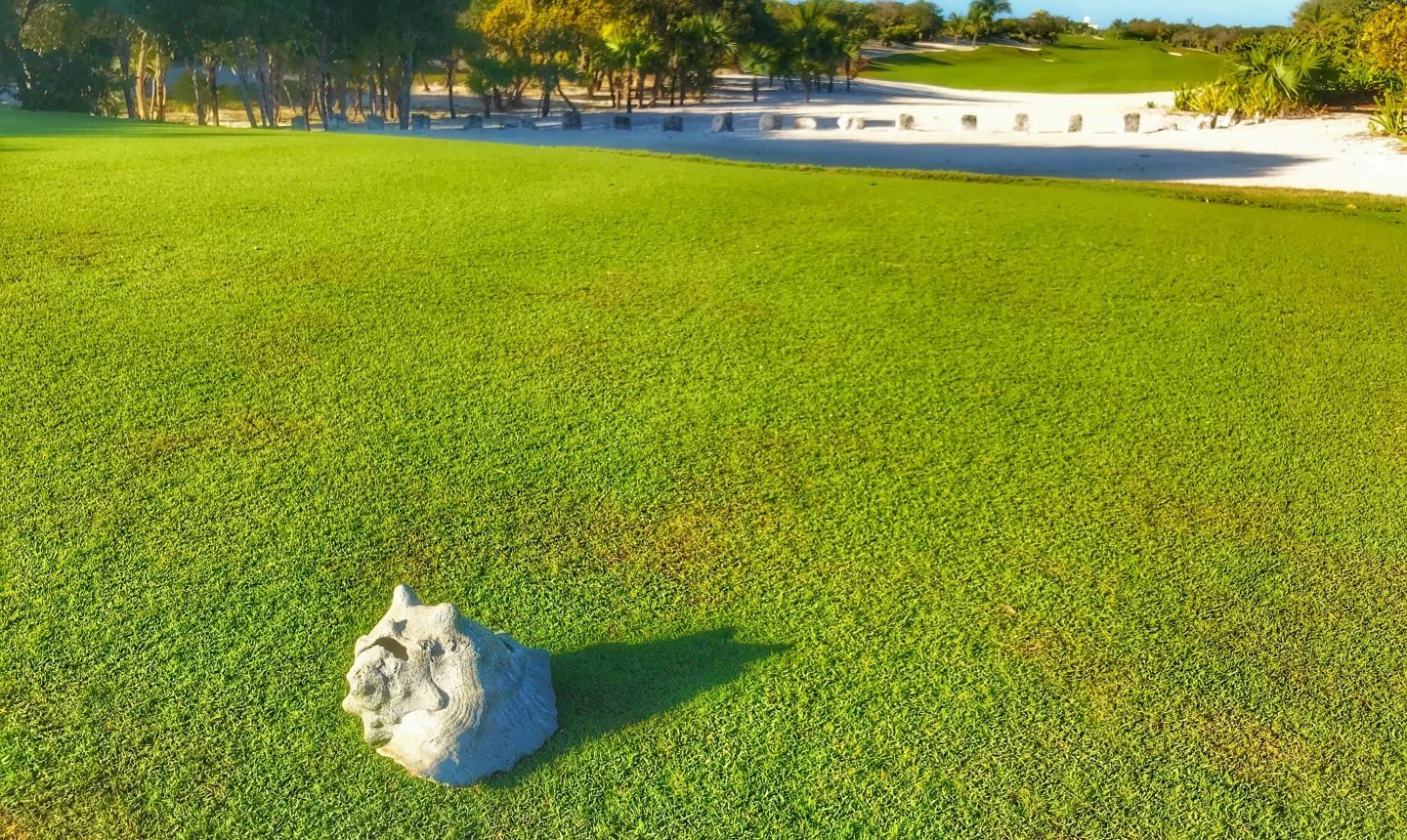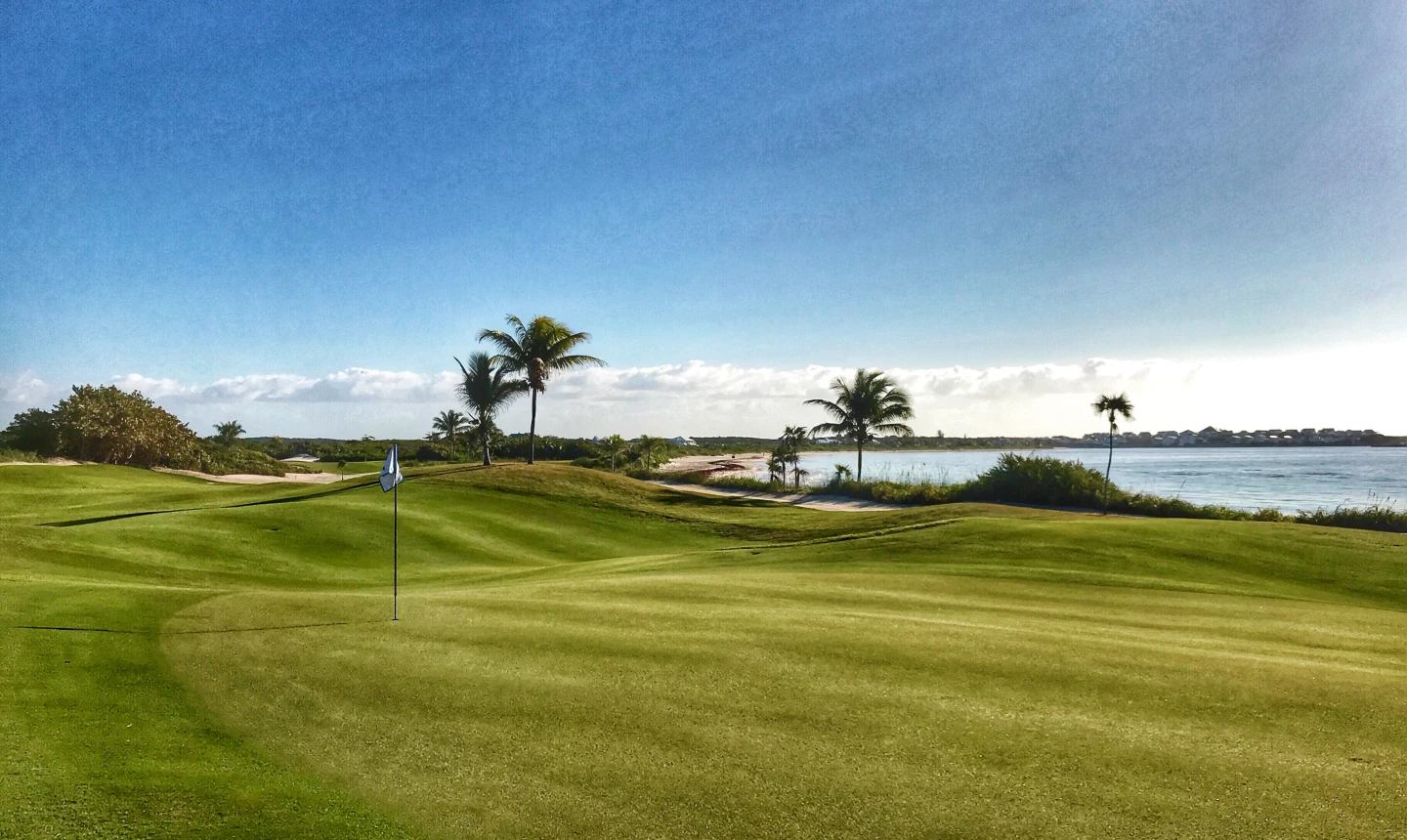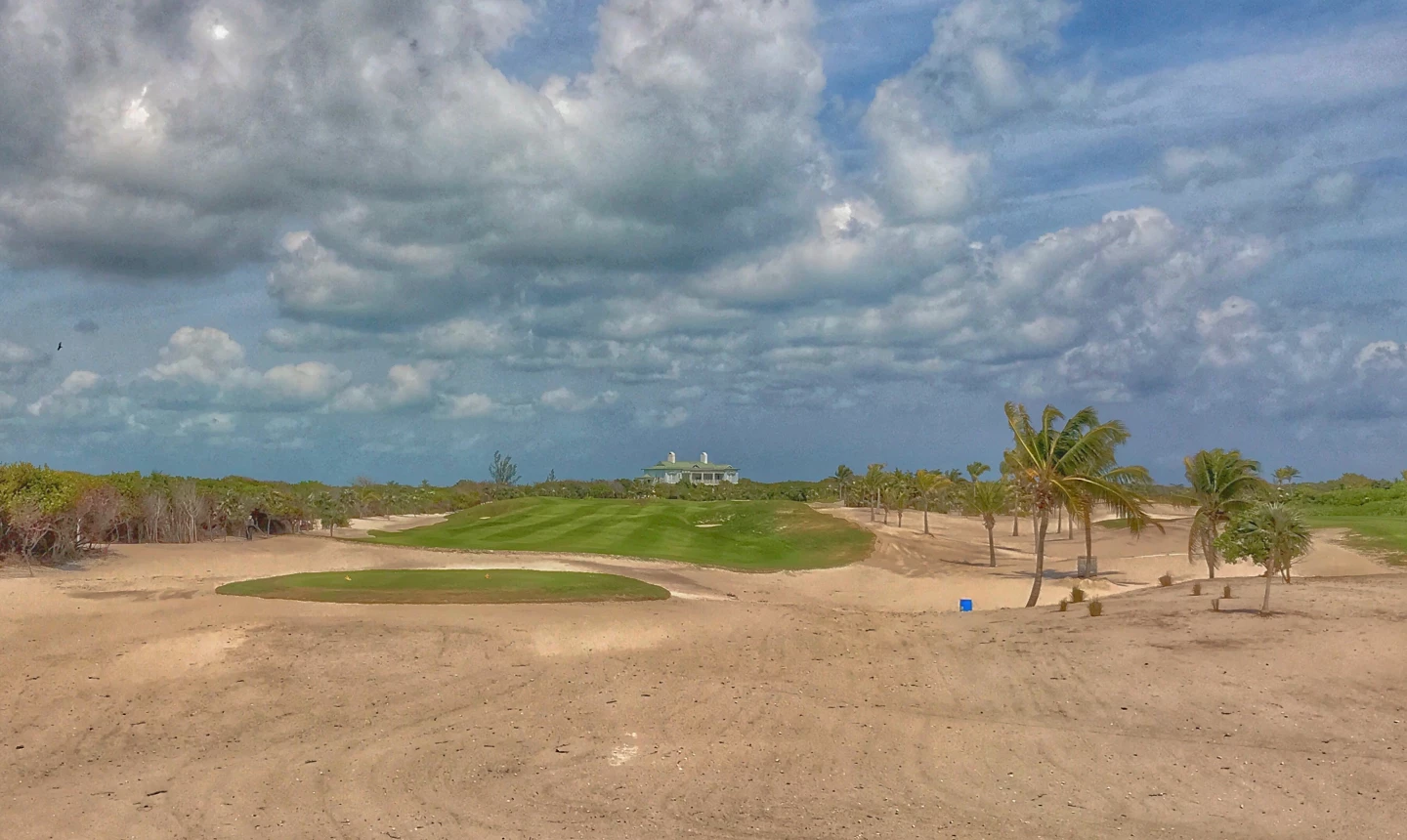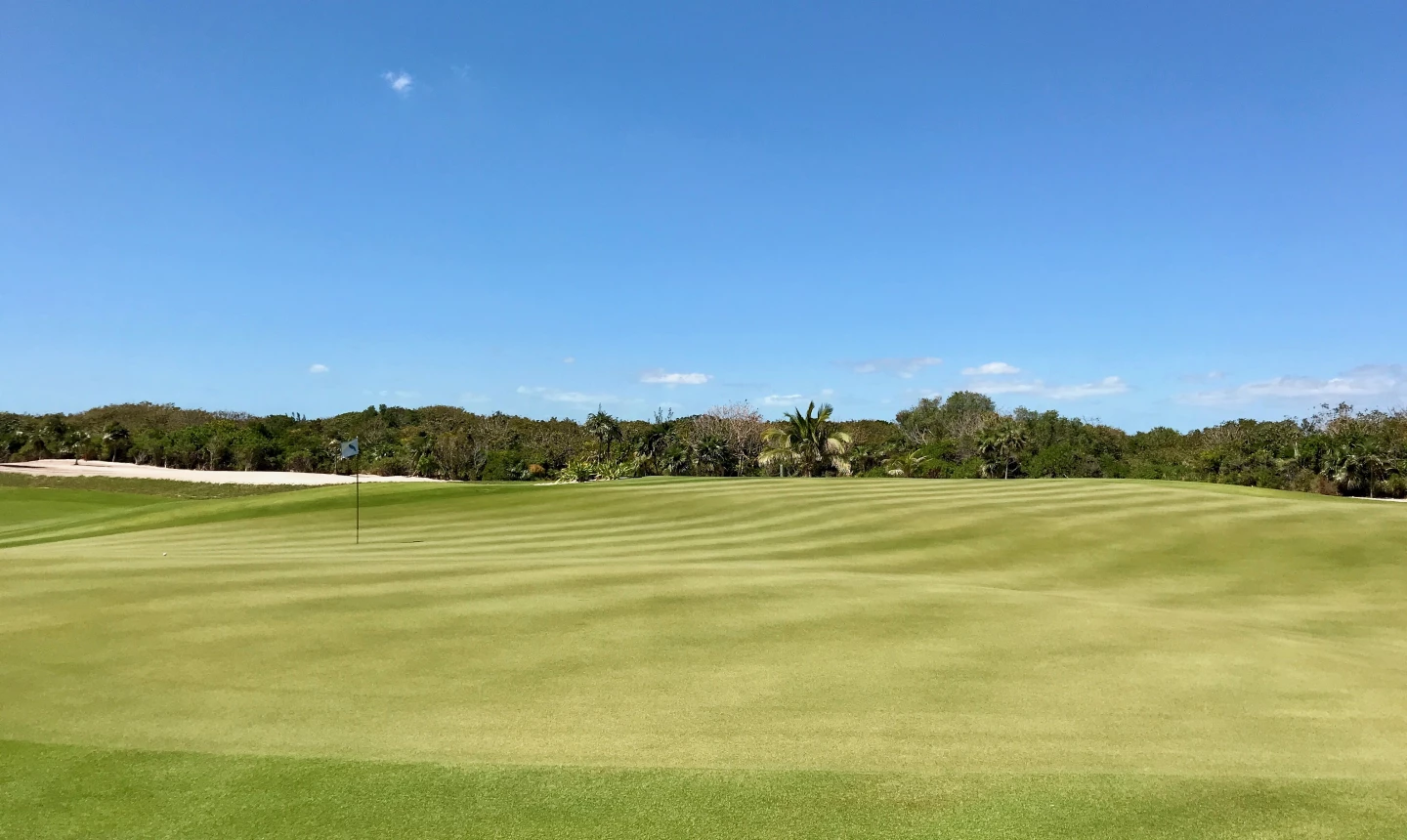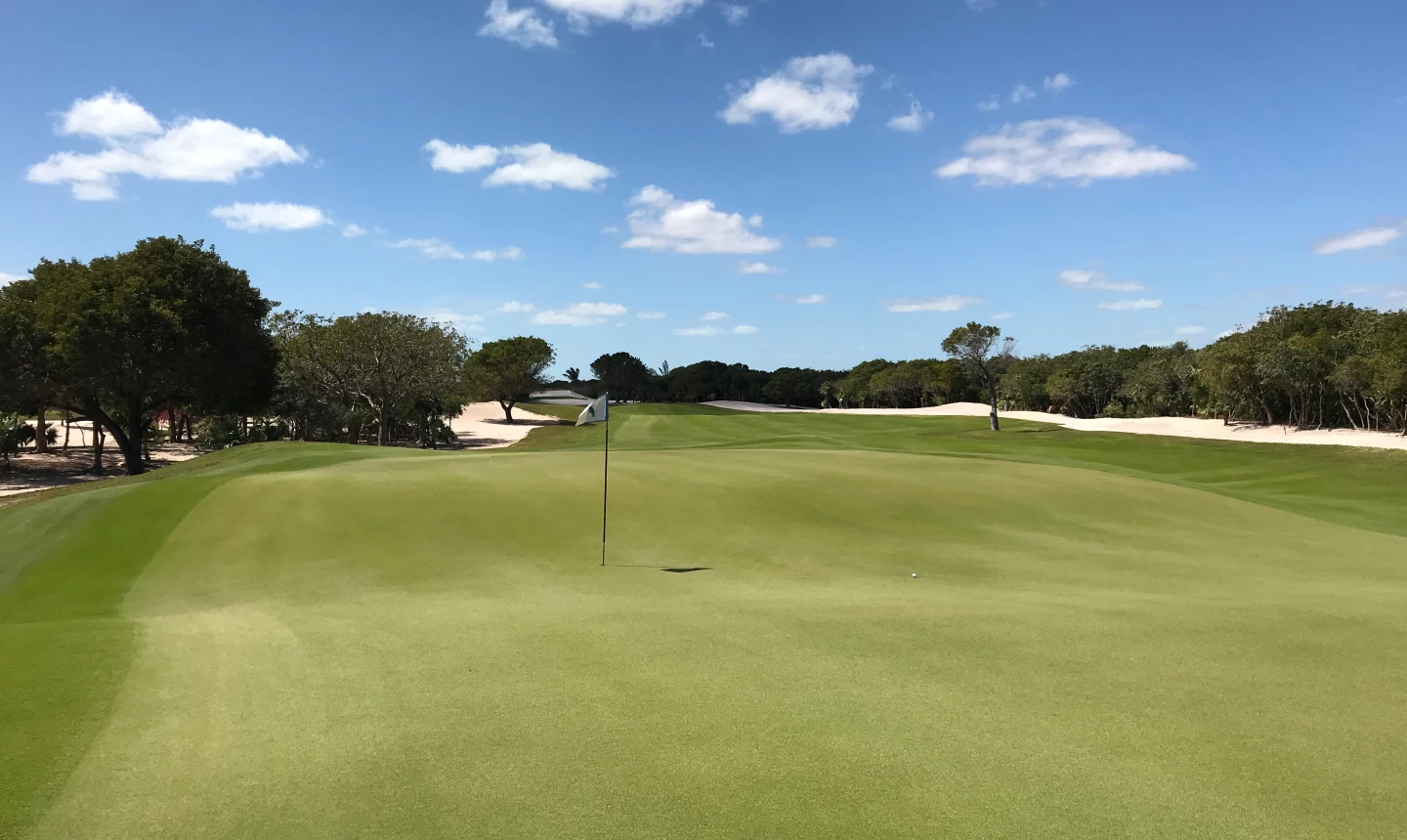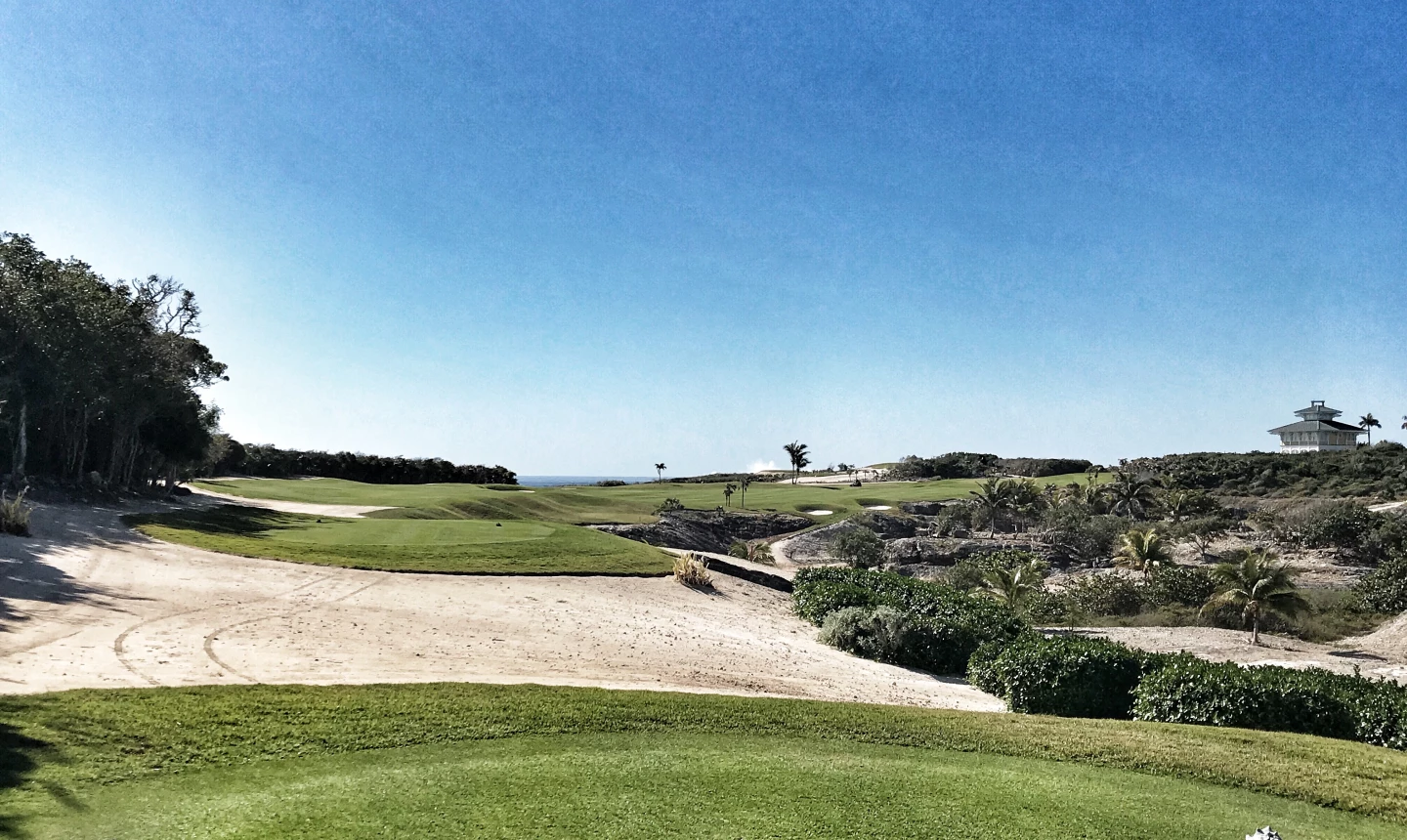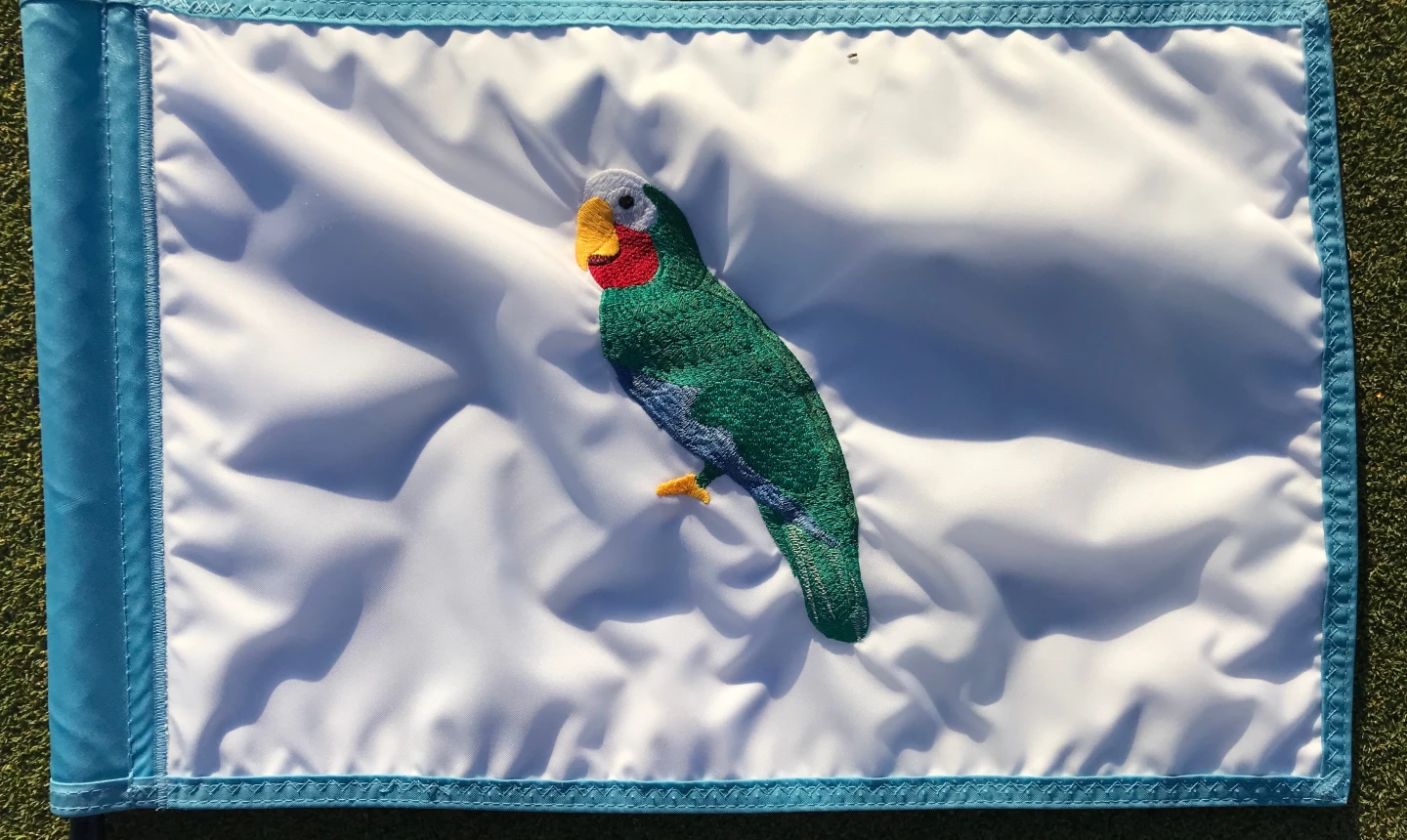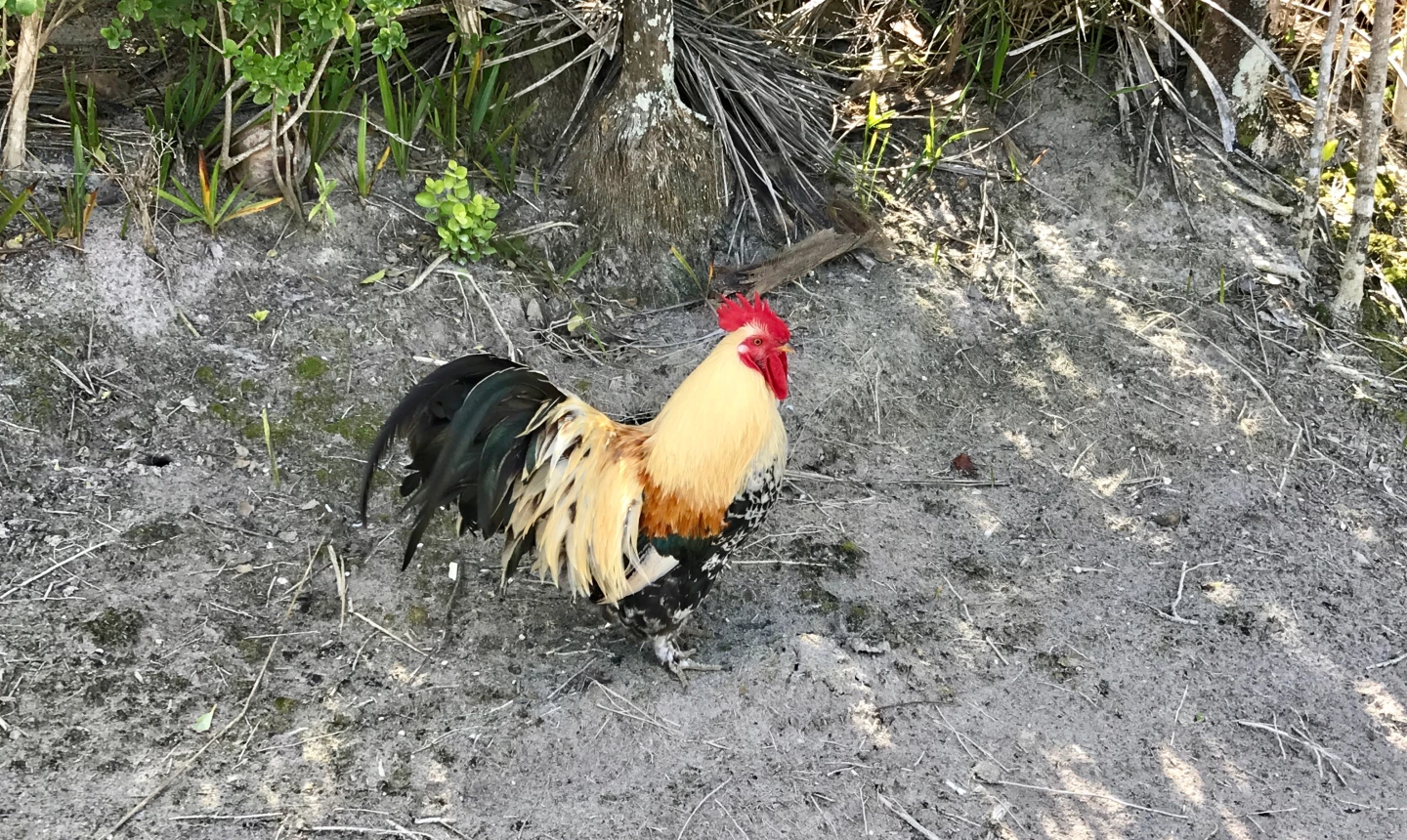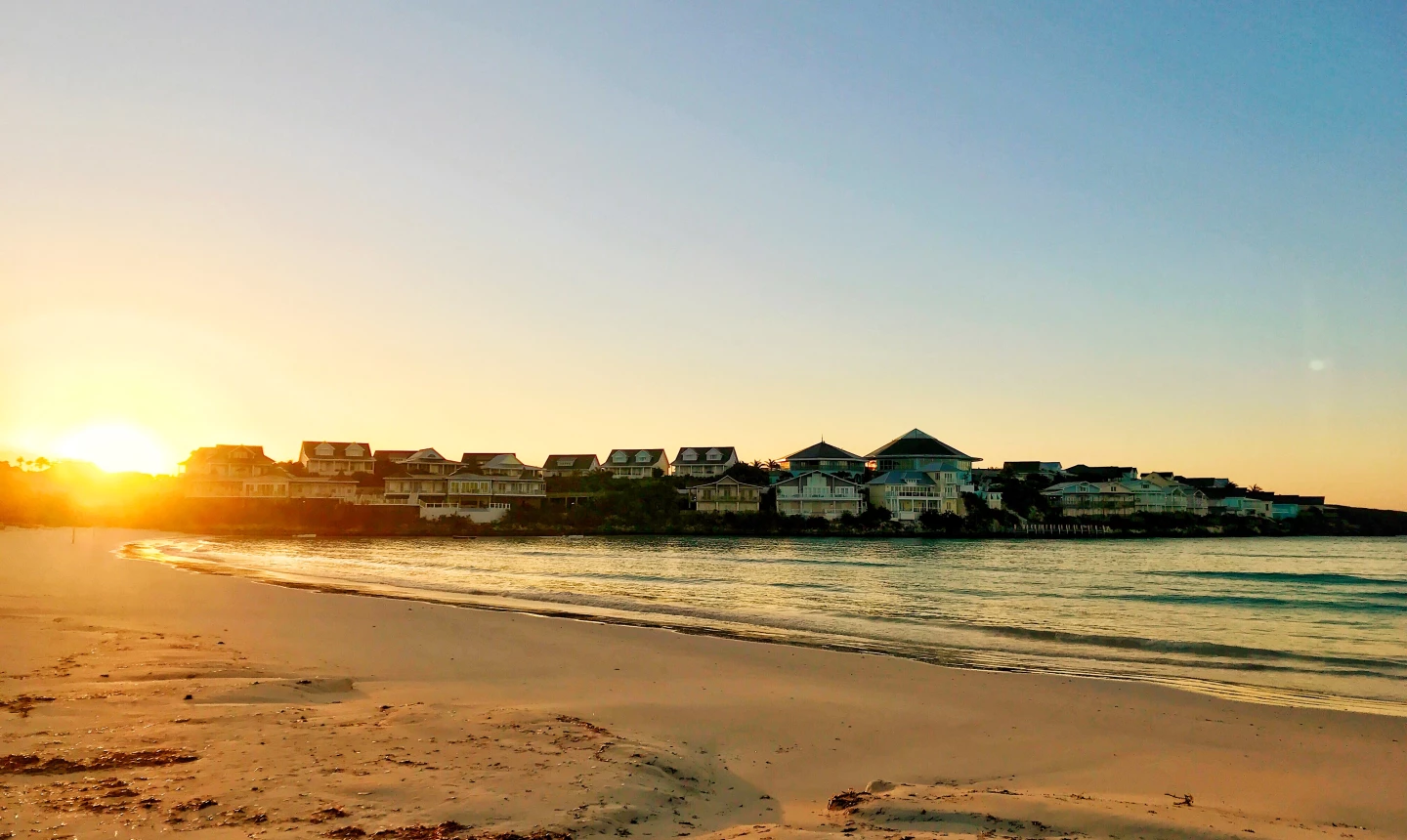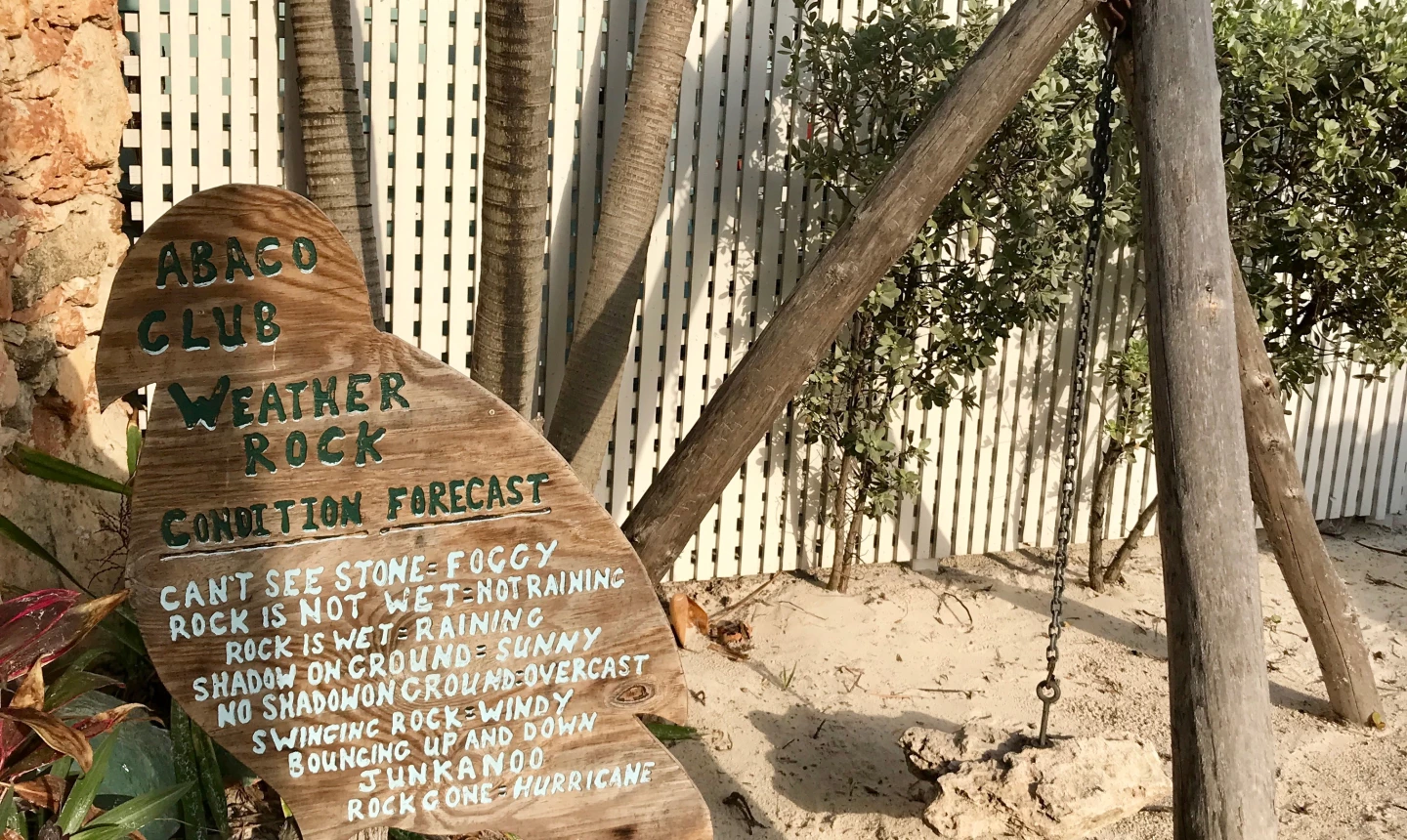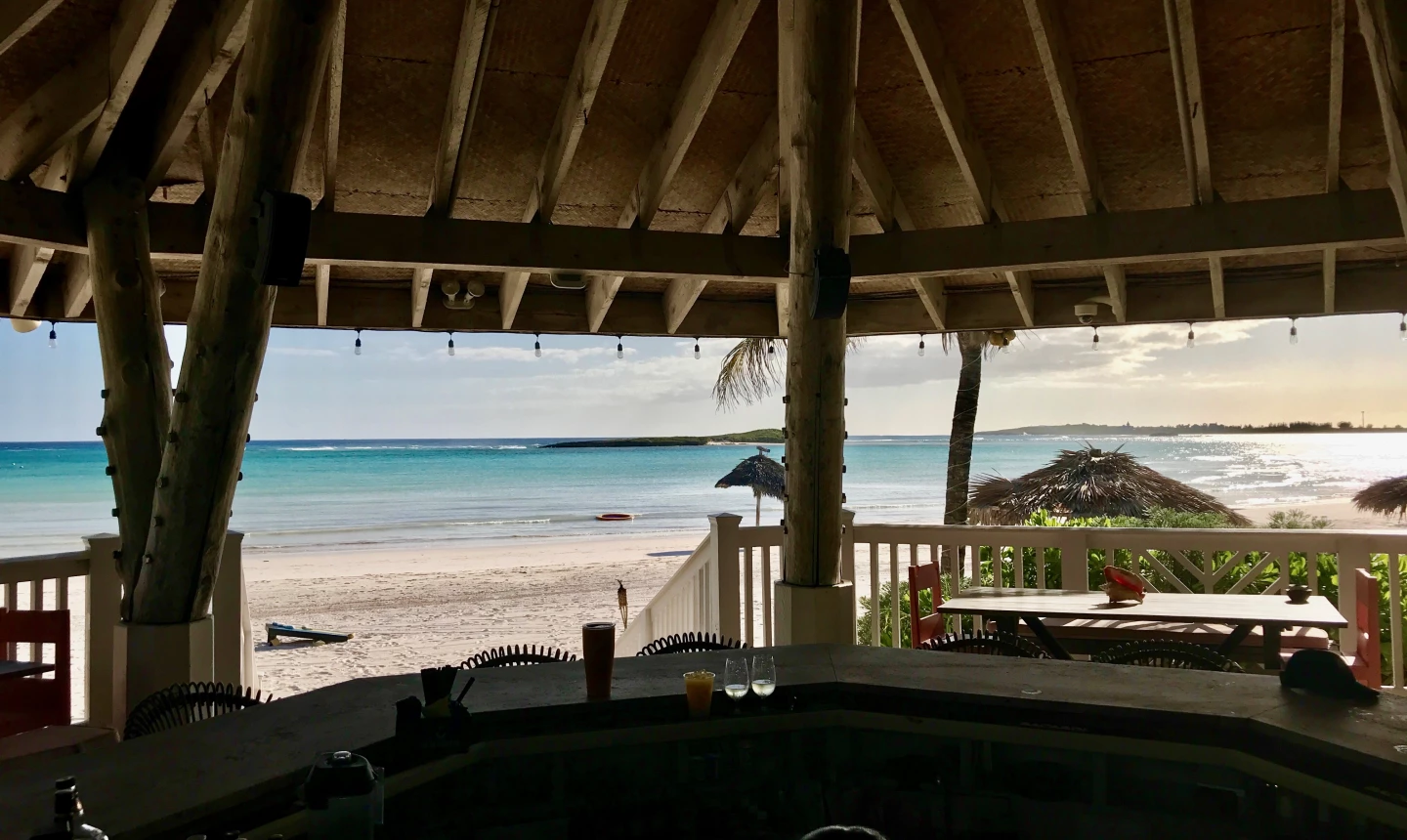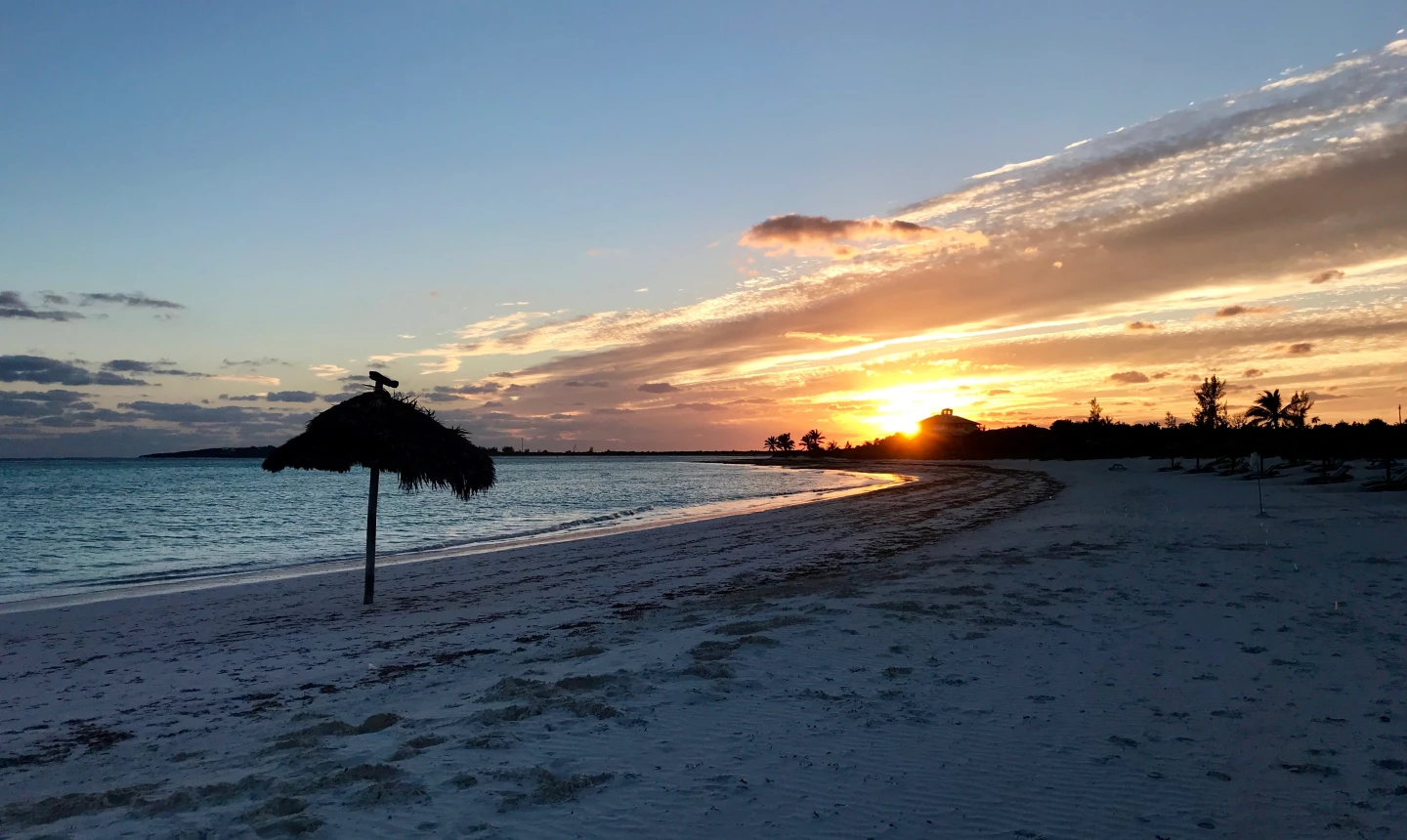ABACO, Bahamas - The day I arrived at The Abaco Club on Winding Bay, there wasn't time to play any holes, but after checking into my cabana along the first fairway, I grabbed my sand wedge, hopped in my four-seater golf cart - standard issue for guests and members alike once on property - and headed for the short-game practice area.
While the sun set, I had a blast hitting all kinds of shots - short chips and bunker shots up to 70-yard pitches to all four of the practice greens, each defended a little differently with deep pot bunkers, surrounding fairway-cut grass and internal contours that mimic those found on the course.
I wasn't alone at The Abaco Club's short-game range. The other golfer out there was wearing a t-shirt and board shorts, and a large white German shepherd was sitting attentively by him.
That fellow golfer turned out to be Brian Shaver, the club's head pro. I don't think I've ever seen the head pro of a golf course - much less a high-end, private club like The Abaco Club - so attired. Not only was it a refreshing sight, but it was perfectly reflective of the laid-back attitude that helps make The Abaco Club one of the Caribbean's best places to play golf.
The course
What is a links golf course?
The term "links" in golf is a bit like the term "bourbon" in whiskey. Legally speaking, for a whiskey to be called "bourbon," it needs to satisfy certain criteria about where it's produced, what's in it, etc. Though not a hard-and-fast rule, it's pretty widely agreed that "true" bourbon should come from Kentucky.
Nevertheless, some distillers describe their product as bourbon even when it isn't. Why? Because there's a sort of cachet around the term, even though there are plenty of excellent whiskeys that are not bourbons, and there are plenty of bourbons that aren't excellent whiskeys.
So it is with “links golf.” Hyper-specific requirements vary based on who you ask, but there are some widely agreed-upon guidelines on what constitutes a links golf course. Generally speaking, links golf courses are seaside (or very close inland), have firm - usually fescue - turf and sandy soil. Wind is practically ever-present, and indeed great links courses are challenging but eminently playable in very strong winds from all points of the compass.
Like "bourbon whiskey," "links golf" has its own cachet. Describing a golf course as "links-style" invokes golf's ancient tradition as a way to appeal to golfers' romantic sides. Unfortunately, accuracy is not usually a concern. Lots of self-proclaiming "links-style" golf courses have next to nothing linksy about them.
In light of all that, is The Abaco Club on Winding Bay in the Bahamas a links course?
From its 2004 opening, original developer Peter De Savary termed it “a tropical links.” Not “a tropical links-like course.” De Savary then, and current owner (since 2014) David Southworth of Southworth Development, maintain that the course is a links - a tropical one.
But isn’t “tropical links” not only a marketing-driven misnomer, but an oxymoron? Tropical courses are almost by definition softer than most, due to the amount of rain they receive and the grasses they use. Heat- and humidity-loving Bermuda and, increasingly, salt-tolerant Paspalum, do not generally allow for the type of ground-hugging shots that are both the requirement and the joy of playing links courses.
I know from experience that if I find myself on fairway-length Paspalum grass 30 feet off the putting surface, I am courting disaster if my pitch shot does not carry all the way to the putting surface. The first bounce on Paspalum is almost always straight up in the air, causing an otherwise well-struck shot to peter out and stop woefully short of the hole. Bump-and-run shots just don't tend to work on Paspalum, which severely limits short-game shot options.
Having heard The Abaco Club had Paspalum fairways and greens, I expected a little bit of incongruence between the maintenance of the course and the links philosophy of the Donald Steel/Tom Mackenzie design.
It turns out I had nothing to worry about.
The Paspalum turf at The Abaco Club was the best of its kind I have ever played on. Superintendent Matt DiMase had the course absolutely dialed in when I was there a few weeks ago. At the end of a relatively dry winter, DiMase and his staff enabled all the links-inspired features of the course to shine brighter than I would have anticipated.

The 14th hole at The Abaco Club at sunset. (Tim Gavrich/Golf Advisor)
Let’s talk about those features for a moment. Because of the aforementioned limitations of the turf and the weather, firm and fast conditions usually are not on the table in the Caribbean. That being the case, the golf in places like Jamaica and the Dominican Republic is mostly played through the air. Forced carries over bunkers and water abound. Low-handicap players excel but shorter hitters and less experienced golfers tend to have a hard time. Pro shops make a mint off replacing visitors’ lost golf balls
Not so at The Abaco Club. Every green is open in front, encouraging the ground game not just for its shorter-hitting core clientele but for professional golfers like 2011 Open Champion and 2016 Ryder Cup captain Darren Clarke and South African European Tour player Thomas Aiken, who are Abaco Club members.
The course's routing echoes that of many ancient links, with six of the first seven holes marching straight out from the clubhouse along Winding Bay, with the electric blue waters visible from the fourth and fifth holes. For my rounds, these holes all played into a healthy wind that quartered from the left. “You got the easy wind,” Shaver told me. The native Louisianan’s white German Shepherd, Gumbo, seemed to nod in agreement.
That southerly wind is “easy” because once the golfer putts out on the seventh hole, seven of the next eight play practically straight downwind. This includes the two longest par fours on the course, the 11th and 13th.
The supporting wind is not always helpful, though. On shots such as the uphill approach to the par-4 ninth, it can make judging the distance very tricky, especially to a front pin. Most golfers are not used to landing shots short of a green, but in many situations at The Abaco Club, it is necessary.
My favorite single hole is the eighth, one of the finest short par fives I’ve ever played. Though it plays mostly straightaway, strategic demands abound, with heaving fairway undulations, staggered fairway bunkers affecting a layup, and a huge, double-plateau green concealing half a dozen or more compelling hole locations. Any golf course would be improved with a hole of its caliber.

The contours of the 8th green at The Abaco Club really show up in black-and-white. (Tim Gavrich/Golf Advisor)
There is one technical, routing-related knock against The Abaco Club’s links golf credentials. After coming off the 14th green, the golfer ascends some 80 feet to the top of a ridge bordered by cliffs. The course is a lovely walk up to that point, but that particular ascent is a leg-killer, such that walkers will often be picked up by a club employee and shuttled up to the 15th tee. The last four holes - capped off by the spectacular par-3 17th and par-5 18th - are on this promontory.
The walk back down the hill from the 18th hole is a few hundred yards, which is not ideal for hardcore walkers, but the views of Winding Bay on the descent are a sweet consolation, as is the promise of one of cold, fruity rum cocktails the clubs bartenders serve up daily. (FYI, Darren Clarke’s favorite is the Sea Breeze - local rum with orange, grapefruit and cranberry juices.)
So, is The Abaco Club a links course? Who cares? It’s an excellent golf course, full stop, and one that you can - and should - add to any bucket-list Caribbean golf trip.
The resort
The Abaco Club is private and low-density (the course hosts fewer than 5,000 rounds per year), but what few people know is that it is playable on a stay-and-play basis. From the cozy, circular Cabanas to multi-bedroom Cottages to some over-the-top beautiful, beachside and rentable Estate Homes (some of which are on the market for more than $5 million), it has versatile accommodations offerings. The only catch: non-members may only visit a maximum of three times before committing to become a member of the club.
Couples, families and even groups of members from the same golf club will all love spending a few days on property. Golf is just one of the great outdoor activities on offer. Winding Bay's bright-sand beach is a perfect place to work on a tan, there are tennis courts in the center of the property and all kinds of boating, fishing and snorkeling opportunities.
Just off-site is the off-the-grid community of Little Harbour, where club members and guests will often hang out at the quirky-charming Pete's Pub, which serves splendidly fresh seafood and, believe it or not, beloved burgers in addition to all manner of drinks. It's a must-visit spot while on property, and rides to and from Little Harbour can be arranged through The Abaco Club. A dedicated club marina is being built there soon.
Accommodations range from $500 per night upward, and guest fees for golf are $250. Those prices are not low, but the scenery, friendliness of the staff and the addictive high quality of the golf course earn The Abaco Club a worthy spot on the traveling golfer’s radar.

